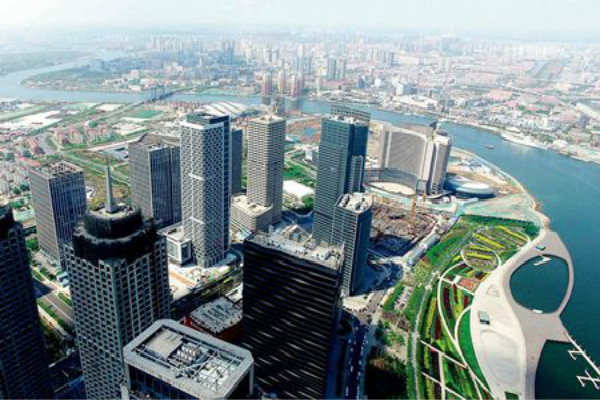
Binhai New Area sees upgrade in high-quality development

A bird's eye view of Binhai New Area [Photo/Xinhua]
Binhai new area stuck to deepening reform in maintaining development momentum, yielding good results in the past forty years.
A number of high-end equipment such as airplanes, big rockets, large shipbuilding, and large locomotives are continuously transported from here to national strategic locations and around the world, a dramatic change from forty years ago when nothing but stretch of wilderness existed.
In the past four years of coordinated development with Beijing-Tianjin-Hebei, the Binhai New Area has introduced more than 3,100 projects with the investment of more than 390 billion yuan (56.37 billion dollars).
Its achievement has received the wide focus of Chinese main news agencies, including CCTV, Guangming Daily, Economic daily and Xinhua.
The area has witnessed continous enhancements in endogenous power with a cluster of high-tech industries assembled such as aerospace, biomedicine, new energy and new materials.
"Emerging industries increased to 27.1 percent by the end of last year, indicating that industry structure is improving," Tang Zhongfu, deputy director of the Development and Reform Commission of Binhai New Area said in an interview.
By the end of 2017, the total number of independent R & D institutions in the new district had reached 30, with a total of 464 R & D centers above the city level, including 111 key laboratories, 112 engineering centers, and 241 enterprise technology centers, he said.
Ecology protection also made notable advances. Ten-year-old Sino-Singapore Tianjin Eco-city gave birth to a new green city and a set of indicators covering building, transportation, soil improvement and other areas in defining Eco-city.
In addition, the government launched new measures to improve efficiency and service; a one-stop "online + offline" and "entity + virtual" service system was built for the people, standing for an institutional innovation example.

